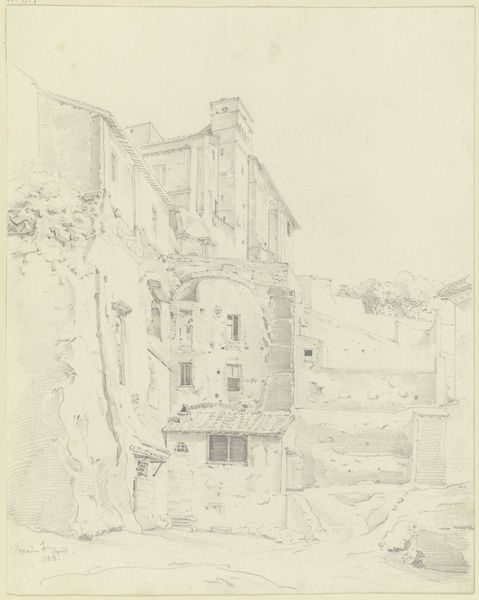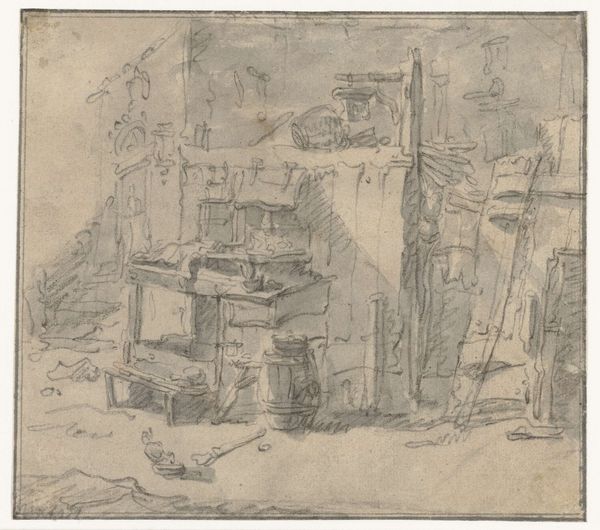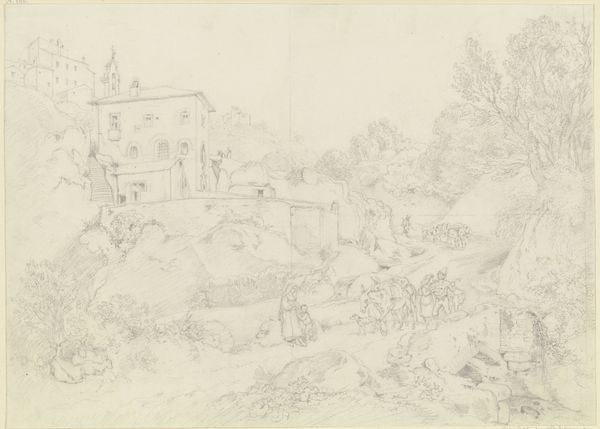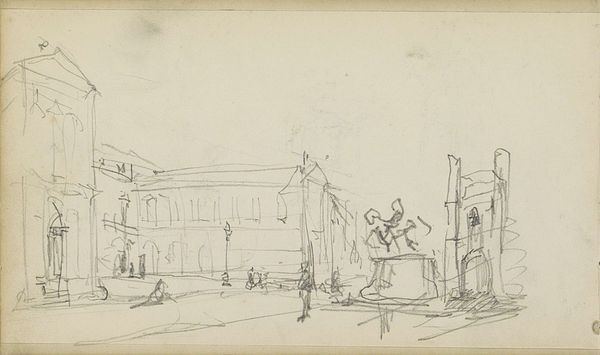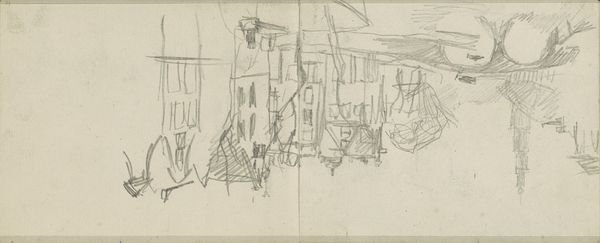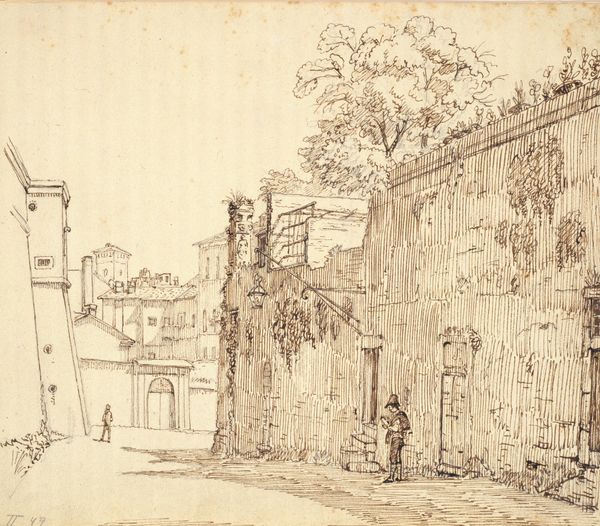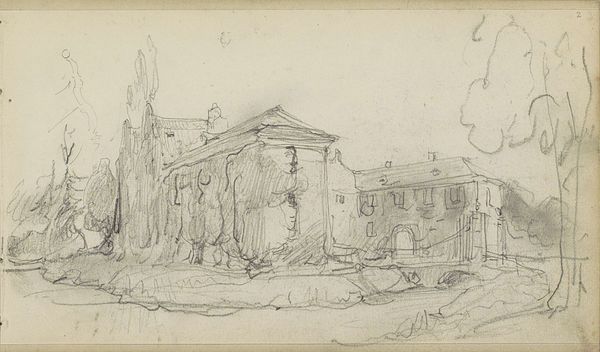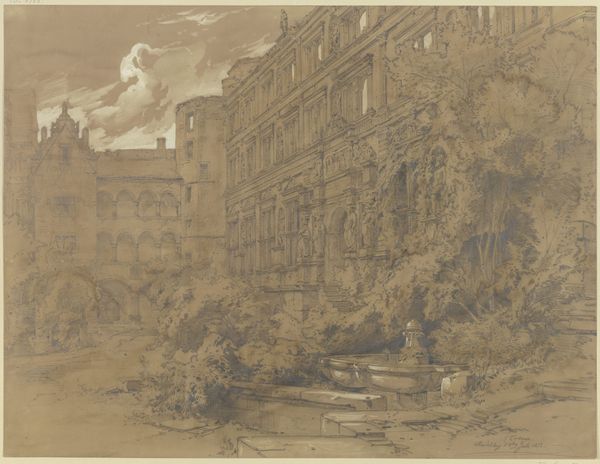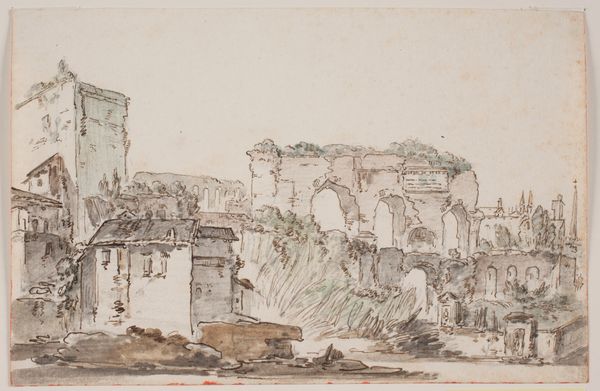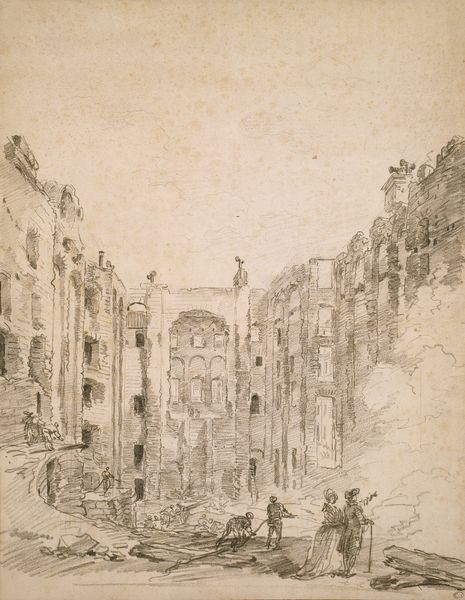
Copyright: Public Domain
Albert Emil Kirchner created this pencil drawing, "Entrance to a Garden in Venice," in the 19th century. Dominating the foreground is a fountain adorned with classical sculptures, motifs harking back to antiquity and the Renaissance revival of classical ideals. These figures—perhaps nymphs or allegorical representations of nature—speak to a longing for an idealized past, a common thread throughout art history. We find echoes of such figures in Botticelli's "Primavera," where classical deities frolic in a mythical garden. The motif of the garden itself, as a sanctuary from the outside world, has ancient roots, from the Garden of Eden to the enclosed gardens of medieval Europe. There is a psychological weight carried within this symbol. The garden is a place of refuge and contemplation, engaging our subconscious desires for peace and harmony. However, the decaying architecture and the overgrown foliage suggest the passage of time, hinting at the ephemeral nature of beauty and the inevitable decline of even the most idyllic settings. The fountain sculptures evoke a sense of cultural memory, a link to civilizations long past. This constant resurfacing and reinterpretation of symbols remind us of the non-linear progression of history.
Comments
No comments
Be the first to comment and join the conversation on the ultimate creative platform.
